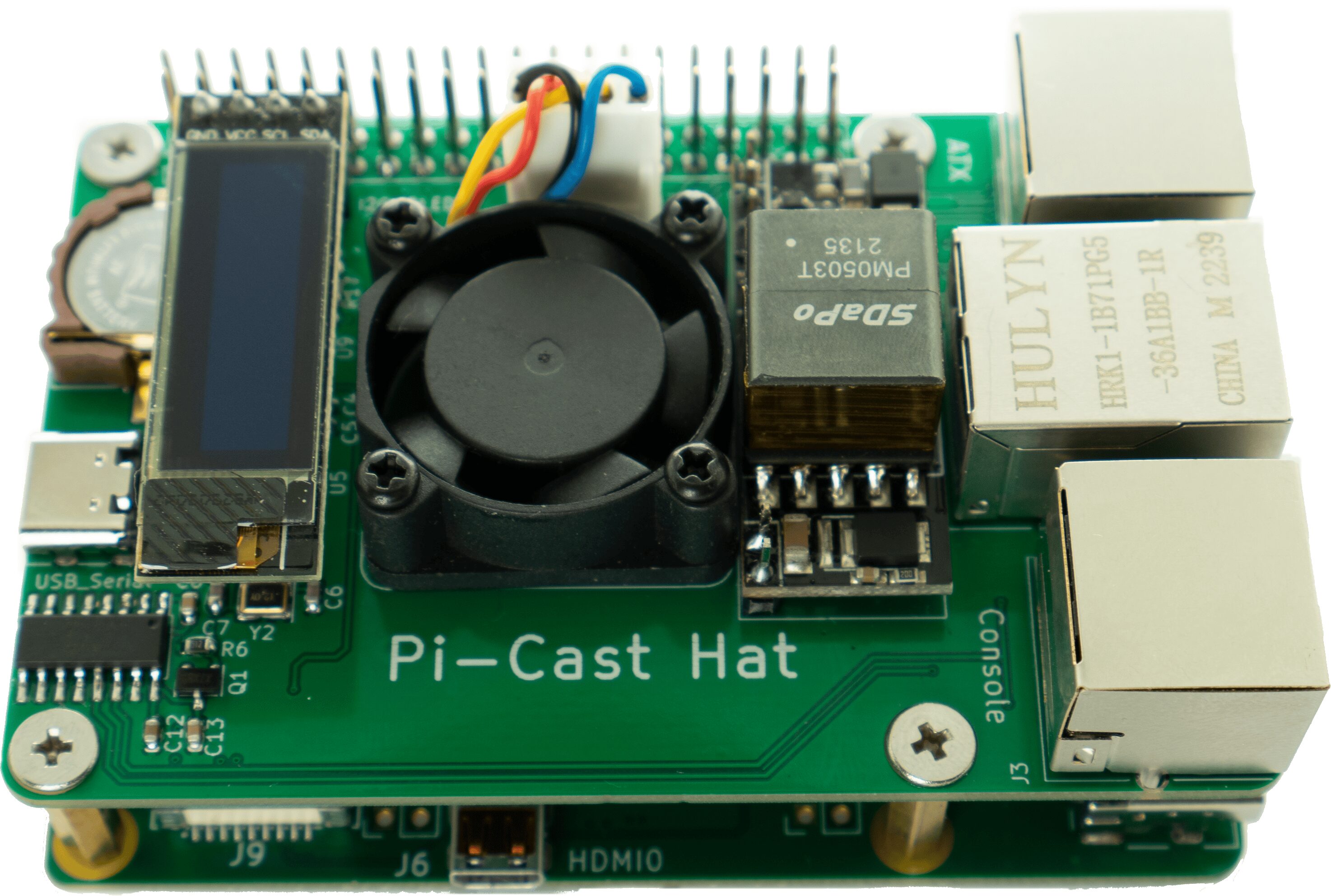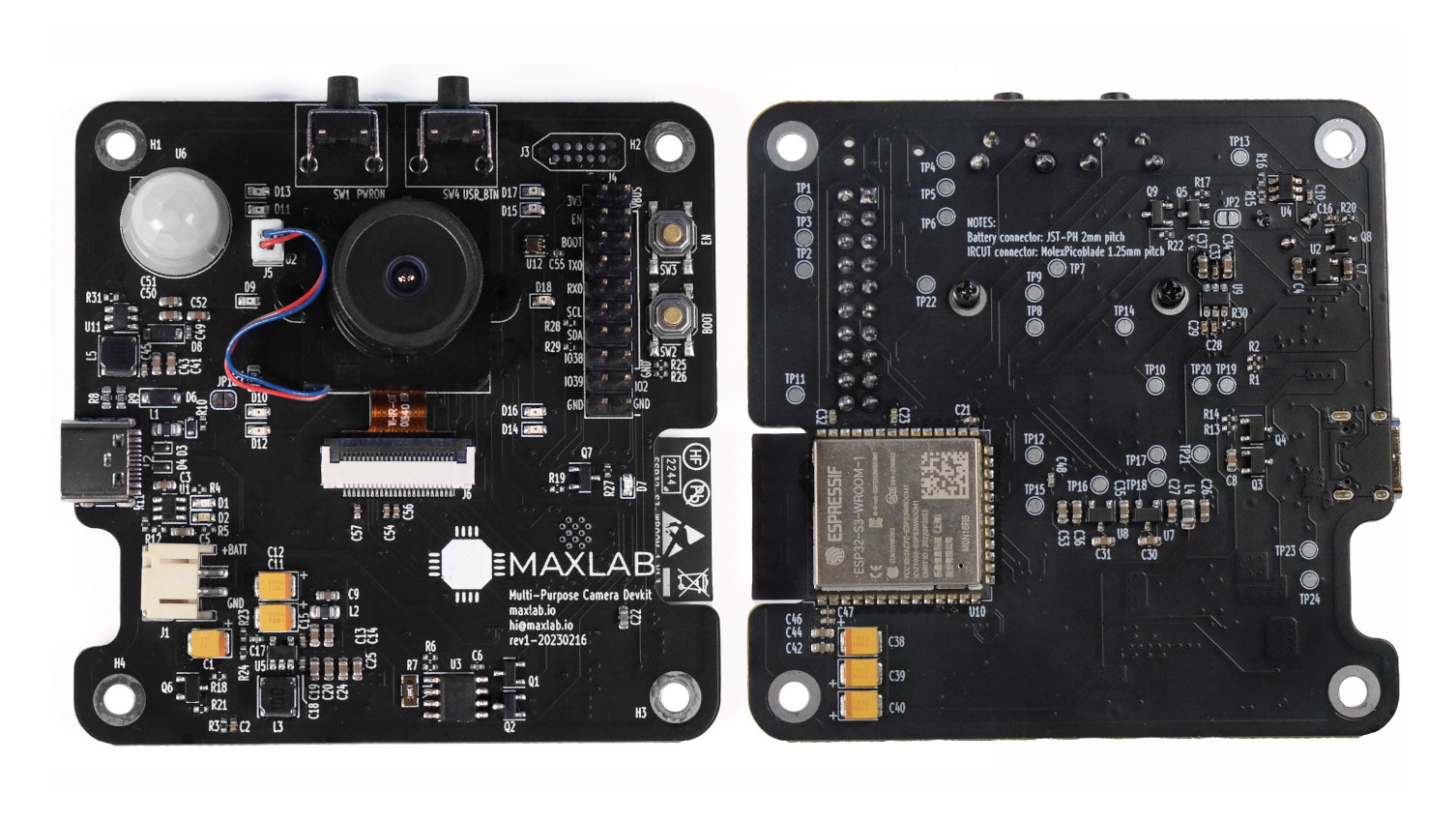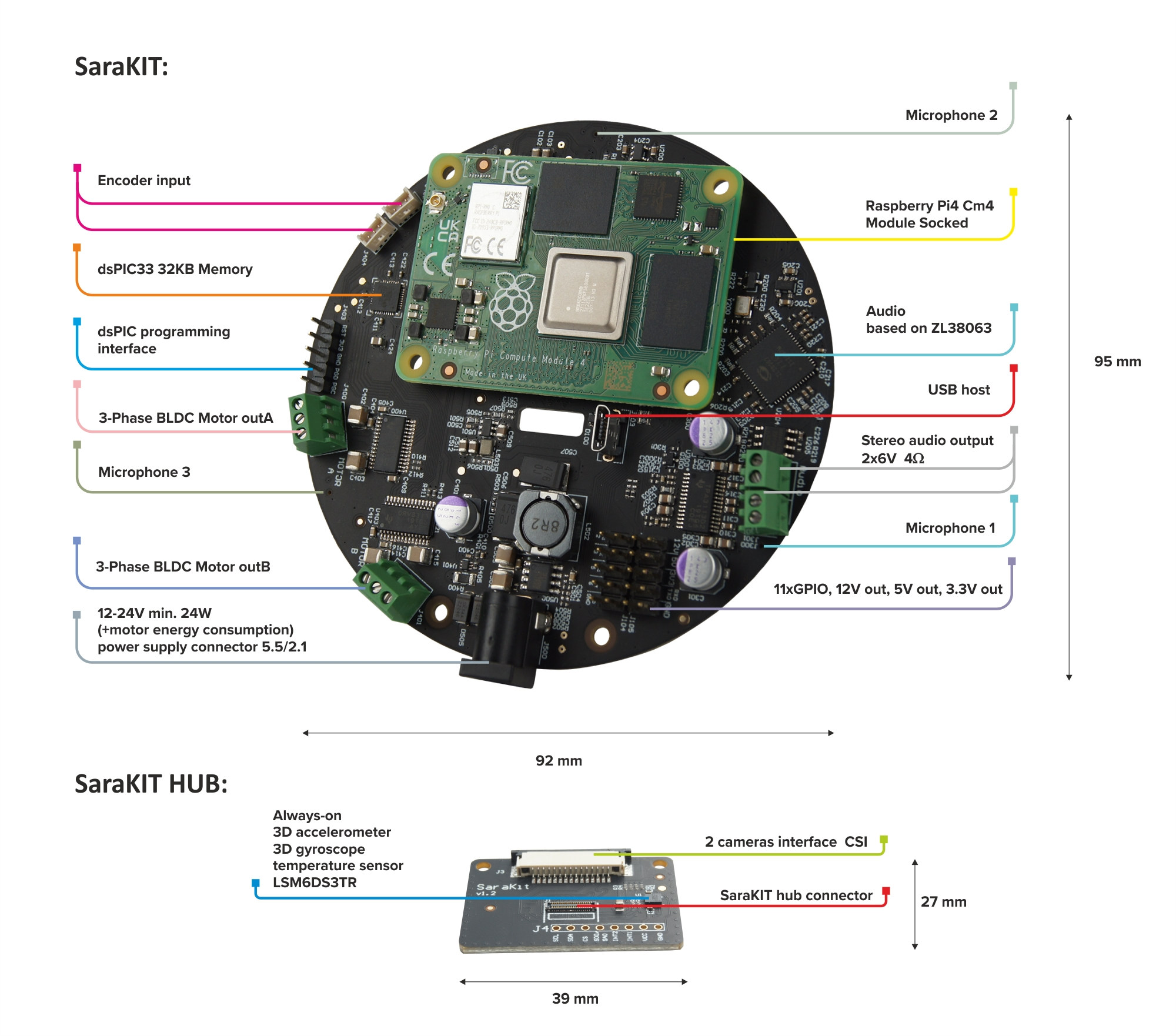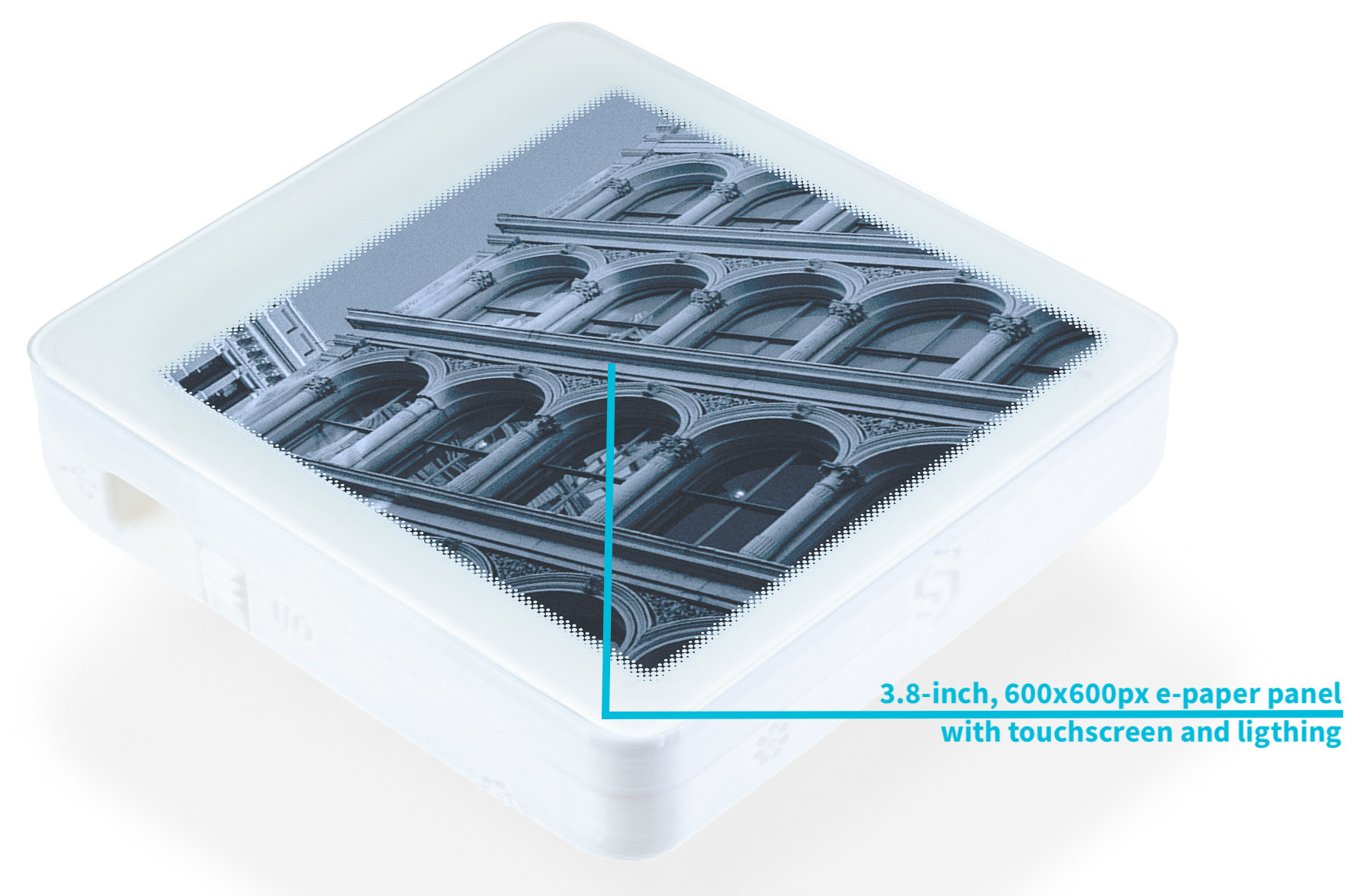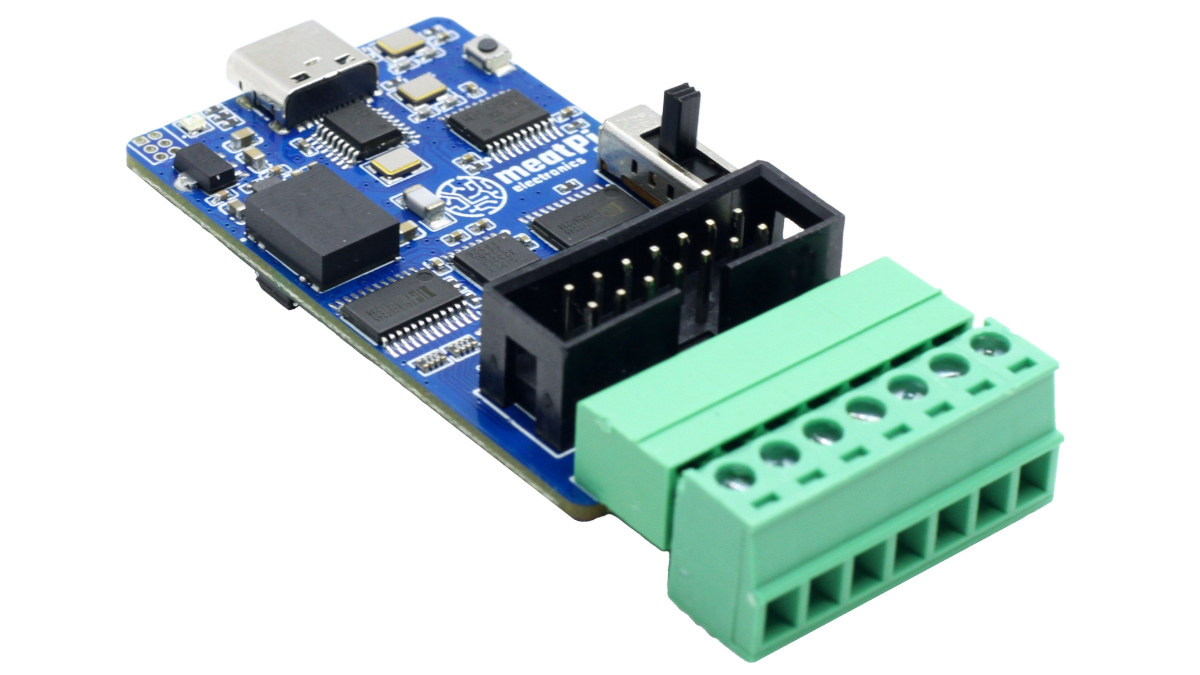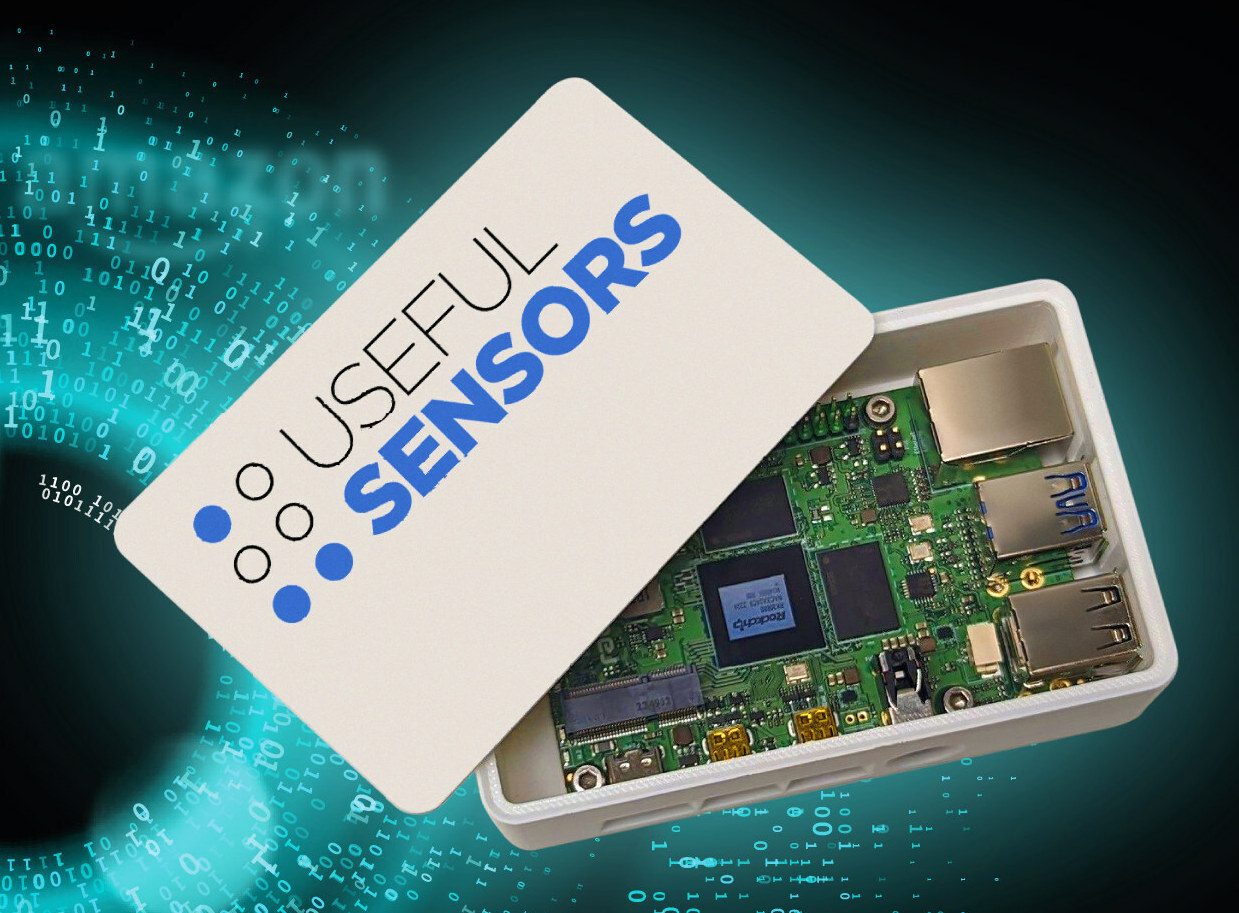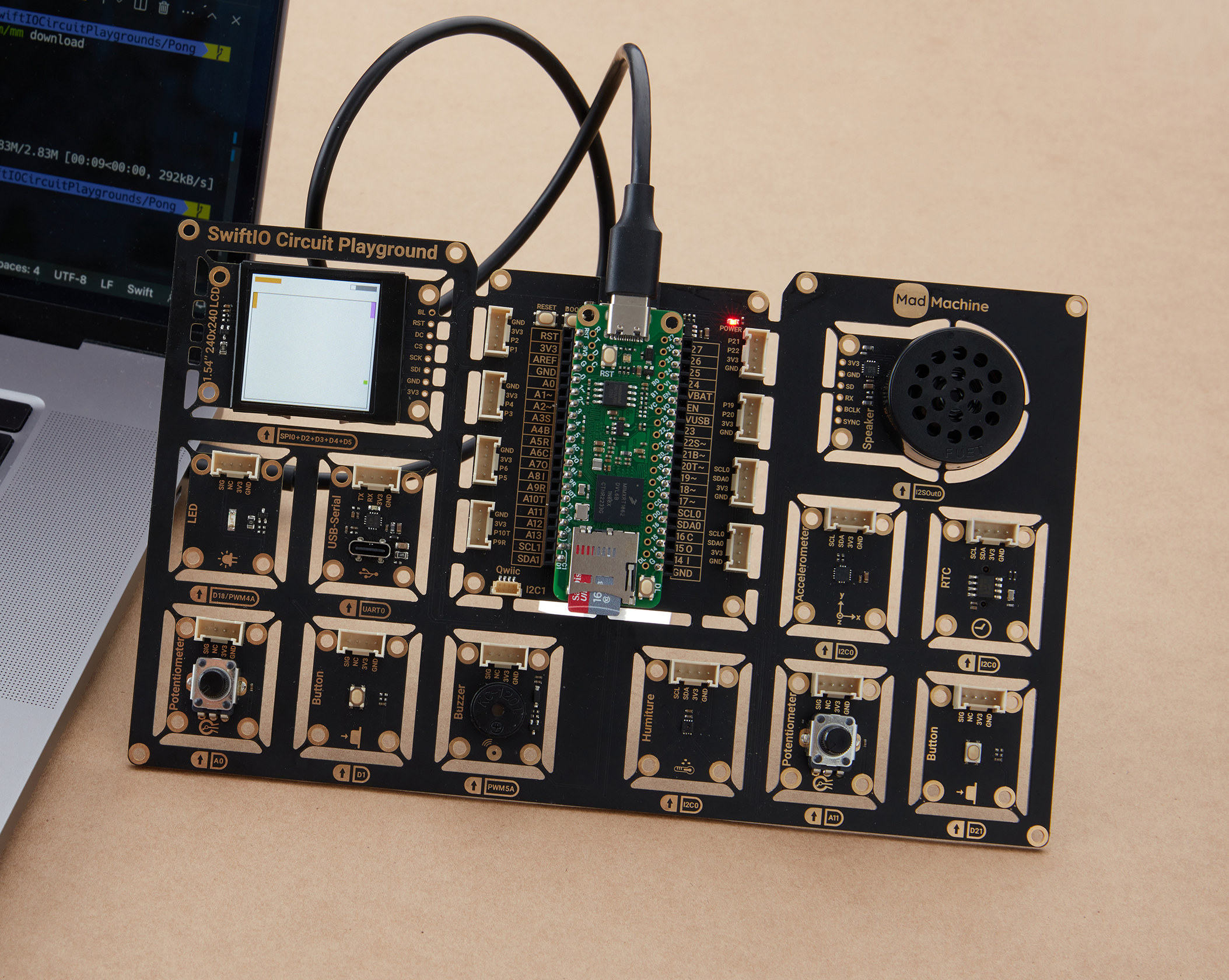GlowStitch LEDs is an innovative new project that is aimed at making machine-sewable LEDs for wearable tech and special crafts of all forms. The LEDs are made from flexible circuit boards which makes them sewable with a machine and usable for various creative projects by makers, cosplayers, fashion designers, and hobbyists. Until now, sewing LEDs to clothing and soft circuits (e-textiles) had to be done by hand with conductive thread, an arduous process that requires a lot of patience. With the GlowStitch LEDs, creative projects can be prototyped using conductive tape and actualized with a sewing machine. This project has a focus on education and the kit is designed to be used by makers of all skill levels. The LED strips can be machine-washed. However, the maker recommends hand-washing with no tumble dry. The battery should always be removed before washing. Although this is not a kit that requires coding […]
Pi-Cast is a portable KVM switch based on Raspberry Pi CM4 (Crowdfunding)
The Pi-Cast KVM is a compact, open-source KVM (Keyboard, Video, Mouse) over IP device based on the Raspberry Pi CM4. It is powered by PiKVM, an open-source IP-KVM solution, and allows you to control and manage other devices remotely regardless of the operating system or even if one isn’t installed. The Pi-Cast KVM is capable of controlling any device with HDMI and USB ports. It works for low-level access and enables BIOS and UEFI configuration without an operating system installed. You can turn off and start the target system, as well as check for low-level hardware problems, all from a web browser. The Pi-Cast KVM is similar to the PiKVM v3 but is built around the Raspberry Pi CM4 (like the PiKVM v4) instead of being a HAT for Raspberry Pi SBC. The company behind this device has compared the Pi-Cast with market alternatives such as PiKVM v4 Plus and […]
Tokay Lite – A battery-powered no-code AI camera based on ESP32-S3 WiSoC (Crowdfunding)
Maxlab’s Tokay Lite is an OHSWA-certified AI camera based on ESP32-S3 WiFI and Bluetooth SoC that can be used for computer vision (e.g. facial recognition & detection) and robotics applications without the need to know programming languages since a web interface is used for configuration. The WiFi and Bluetooth AI camera also features night vision with four IR LEDs, an IR cut filter, light and PIR motion sensors, a 20-pin expansion connector with SPI and UART, support for an external RTC, and can take power from USB-C or a LiPo battery. Tokay Lite specifications: Wireless module ESP32-S3-WROOM-1 MCU – ESP32-S3 dual-core LX7 microprocessor @ up to 240 MHz with Vector extension for machine learning, 512 KB SRAM Memory – 8MB PSRAM Storage – 8MB SPI flash Connectivity – WiFi 4 and Bluetooth 5 with LE/Mesh PCB antenna Certifications – FCC/CE certification Camera OV2640 camera sensor (replaceable) via DVP interface Image Capabilities: […]
SaraKIT – An Raspberry Pi CM4 board with ChatGPT-based voice control, motor control, and plenty of sensors (Crowdfunding)
SaraKIT is a carrier board for the Raspberry Pi CM4 system-on-module with BLDC motor controllers and a range of sensors for robotics, support for ChatGPT-based voice control through three microphones and a ZL38063 audio chip, and two MIPI CSI connectors for cameras. The versatile board can be used for voice-controlled products, robots, home automation systems, and interfacing with smart home or office devices. The company also developed various demos such as a Smartphone-controlled LEGO RC car, a self-balancing LEGO robot, a pan-and-tilt camera, various AI demos using MediaPipe such as face tracking and object detection, as well as audio demos using ChatGPT, Alexa, and/or Google Home. SaraKIT specifications: Support system-on-modules – Raspberry Pi Compute Module 4 (CM4) with future CM5 compatibility. MCU – Microchip dsPIC33 16-bit microcontroller with 32 KB SRAM for motor control and LSM6DS3TR sensor Audio Microchip ZL38063 (previously MicroSemi) audio processor for microphone arrays. 3x Knowles SPH0655 […]
Inkplate 4 TEMPERA ePaper display supports ESPHome, Arduino, and MicroPython (Crowdfunding)
Years after years, Soldered Electronics keeps on churning out new ESP32-powered ePaper displays and the latest model is the Inkplate 4 TEMPERA with a recycled 3.8-inch e-paper touchscreen with 600×600 resolution and plenty of sensors and features for a device of that size. The InkPlate 4 TEMPERA comes with a frontlight, a gyroscope, an accelerometer, temperature, humidity, air quality, and gesture sensors, Wi-Fi and Bluetooth connectivity, a built-in battery, and a low-power operating mode. Inkplate 4 TEMPERA specifications: Wireless module – ESP32-WROVER-E with ESP32 dual-core microcontroller with Wi-Fi 4 & Bluetooth 4.0 connectivity Memory – 8MB PSRAM Storage – 4MB flash PCB antenna Storage – MicroSD card slot Display (ED038TH2) 3.8-inch 3-bit grayscale (black, white, and six shades of gray) ePaper display with 600 x 600 pixels resolution Refresh rate 0.18s partial refresh rate in 1-bit (B&W) mode 0.86s full refresh mode in either 1-bit or 3-bit modes Multi-point touchscreen […]
Ollie v2 USB to UART/CAN/RS485/RS232 converter gets USB-C port, plastic enclosure, and more (Crowdfunding)
Ollie v2 is an improved version of the Ollie USB to isolated UART, CAN Bus, RS232, and RS485 converter that gains a USB-C port, a plastic case, the ability to set the voltage from the target board, and various other minor improvements. Like the first version, the Ollie v2 is a portable tool designed for hackers and field engineers that allows them to work with a single device instead of a bunch of USB converters, each handling a single protocol, and isolation makes sure the host, such as a laptop, is protected from high voltages. Ollie V2 specifications: Serial chip – WCH CH344 quad-serial port chip (instead of XR21V1414 in the first design) Host interface – USB Type-C port Isolated interfaces (all with ESD protection) 2x UART ports up to 6 Mbps with 1.8/3.3/5 V or target voltage levels (set by slide switch) CAN 2.0A/B up to 1 Mbps bus […]
AI in a box offline LLM solution leverages Rockchip RK3588S’ NPU (Crowdfunding)
Useful Sensors “AI in a box” LLM (large language model) solution works offline with complete privacy and leverages the NPU in Rockchip RK3588S processor for conversational AI similar to ChatGPT but without an internet connection or registration required. The AI box prototype currently relies on off-the-shelf hardware, specifically the Radxa ROCK 5A SBC with 8GB RAM, housed in a plastic enclosure, and the code relies on open-source models like Whisper speech-to-text model and Llama2 language models. Besides conversational AI where you can interact with the box as if you were talking to a person, the AI in a Box can also be useful for other use cases: Live Captions – The box can display subtitles/closed captions for a live event or help in situations where people have trouble hearing a conversation using the audio input. Live Translation – It can also translate various languages close to real-time. Simply select […]
SwiftIO Circuit Playground relies on Apple Swift programming for IoT projects (Crowdfunding)
A few years ago, Mad Machine introduced the SwiftIO board powered by an NXP i.MX RT1052 Arm Cortex-M7 crossover processor and programmable with Apple Swift programming language. The company has now launched a smaller version of the board named the SwiftIO Micro along with the SwiftIO Circuit Playground baseboard with plenty of modules to play with the SwiftIO Micro’s GPIO, and that reminds me of the Arduino Sensor Kit Base but with even more modules. SwiftIO Micro specifications: SoC – NXP i.MX RT1052 Arm Cortex-M7 crossover processor @ 600MHz System Memory – 32 MB SRAM Storage – 16MB flash, microSD card slot USB – 1x USB-C connector for power and programming Expansion – 3x 20-pin headers with up to 44 GPIOs, analog inputs, PWM, UART, SPI, I2C, I2S, CAN Bus, etc… See the pinout diagram below for details Misc – RGB LED, download and reset buttons Power Supply – 5V […]



